Info
Subfamily: Panicoideae
Genus etymology: Paspalum = "millet" [Greek] some species are used as cereals
Species etymology: dilatatum = "spread out / diliated" [Latin] perhaps refering to the spreading inflorescence branches
Photosynthetic type: C4 (warm season)
Nativity: naturalized - intentional
First recorded in Hawaiʻi: 1903
Map
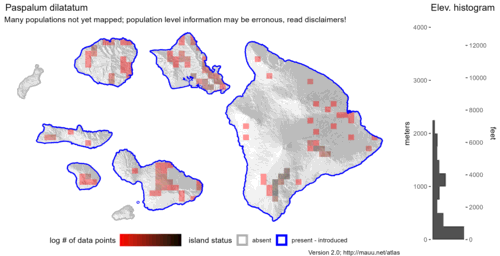

Inflorescence
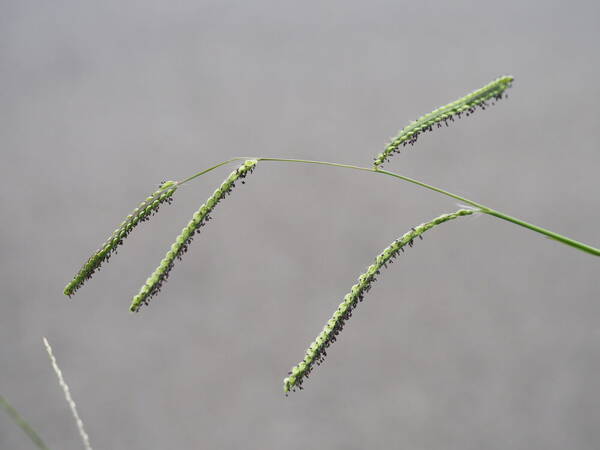
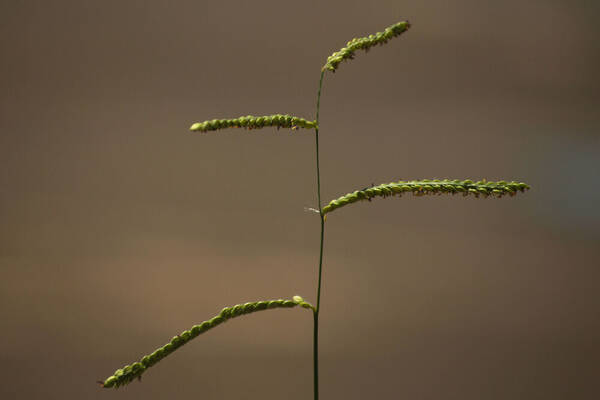
Plant

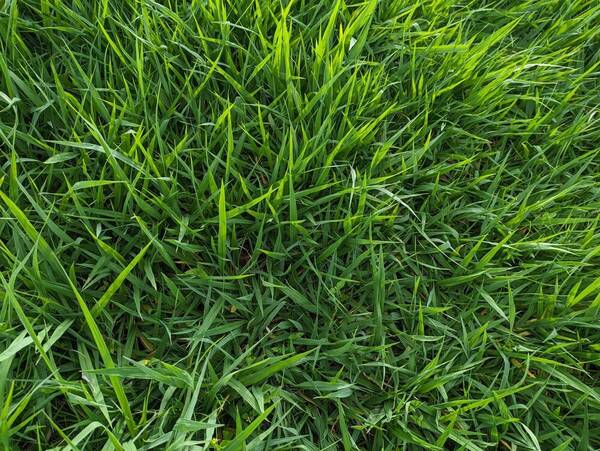
Habit
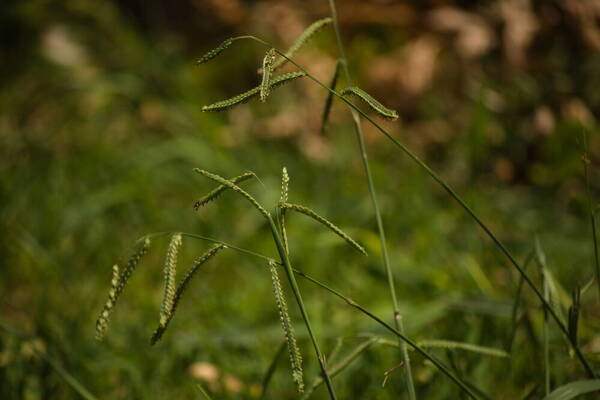
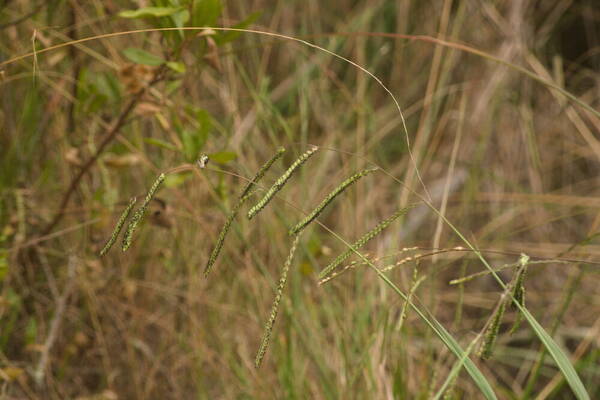
Spikelets
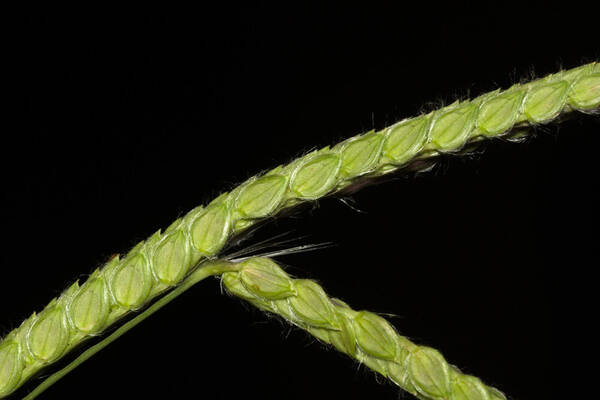
Description
Plants perennial; cespitose, rhizomatous, rhizomes short (less than 1 cm), forming a knotty base. Culms 50-175 cm, erect; nodes glabrous. Sheaths glabrous or pubescent, lower sheaths more frequently pubescent than the upper sheaths; ligules 1.5-3.8 mm; blades to 35 cm long, 2-16.5 mm wide, flat, mostly glabrous, adaxial surfaces with a few long hairs near the base. Panicles terminal, with 2-7 racemosely arranged branches; branches 1.5-12 cm, racemose, divergent; branch axes 0.7-1.4 mm wide, winged, glabrous, margins scabrous, terminating in a spikelet. Spikelets 2.3-4 mm long, 1.7-2.5 mm wide, paired, appressed to the branch axes, ovate, tapering to an acute apex, stramineous (rarely purple). Lower glumes absent; upper glumes and lower lemmas 5-7-veined, margins pilose; upper florets stramineous. Caryopses 2-2.3 mm, white to brown. 2n = 20, 40, 50-63.
(Description source: Barkworth, M.E., Capels, K.M., Long, S. & Piep, M.B. (eds.) 2003. Flora of North America, north of Mexico. Volume 25. Magnoliophyta: Commelinidae (in part): Poaceae, Part 2. Oxford University Press, New York. 783 pp http://floranorthamerica.org/Paspalum_dilatatum )
Perennials; culms tufted, erect or ascending from decumbent base, sometimes rooting at lower nodes, 4-12 dm tall, glabrous or nodes sometimes slightly villous, compressed. Sheaths 6-15 cm long, compressed, usually long-hispid at throat and along margins near base, the basal ones usually densely villous; ligule 3-5 mm long, membranous, bluntly triangular; blades flat, 10-20 cm long, 5-15 mm wide, midrib slightly keeled, margins slightly scabrous, apex acute. Racemes 3-5, ascending or drooping, 5-8 cm long, arranged along upper 6-12 cm of primary axis, long-hispid near base, rachis flat, winged, 1-1.5 mm wide, margins slightly scabrous, sometimes undulate; spikelets paired, imbricate, depressed plano-convex, ovate, 3-4 mm long, apex acute; first glume absent, second glume and first lemma alike, ovate, 3-4 mm long, (3-)5-7-nerved, midnerve prominent, sparsely short-pilose, margins silky pilose, apex beaked; second lemma chartaceous to indurate, ovate, slightly convex, ca. 2.5 mm long, ca. 2 mm wide, faintly 3-nerved, glabrous, margins involute, apex obtuse; palea similar to lemma, flat to concave, 2-nerved. Caryopsis reddish brown, broadly elliptic, compressed, ca. 2 mm long, ca. 1.5 mm wide. [2n = 40, 50-63.]
(Description source: O’Connor, P.J. 1990. Poaceae, pp. 1481–1604. In: Wagner W.L., Herbst D.R. & Sohmer S.H. (eds.)., Manual of the flowering plant of Hawaiʻi. Vol. 2. University of Hawaii Press & Bishop Museum Press, Honolulu )